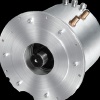Индустриален клъстер "Електромобили" - Учредители:








 |

|

|
| Актуално | За клъстера | Екип | Членове | Документи | Анализи | Услуги | Стани член | Награди | ССЕМ | Контакти |
ИКЕМ - Индустриален клъстер "Електромобили" | Неделя, 28.12.2025 | |
|
The impact of electric vehicles on the energy industry
Summary
The aim of this study is to provide an analysis of the impact that electric vehicles Based on a traffic impact analysis, the following issues were examined in this study: • Impact on electricity generation through the charging of electric vehicles • Impact on the public power grid • Changes to the Austrian carbon footprint
• Economic analysis including a cost-benefit calculation 1 Results
• 20% coverage (approx. 1 million electric vehicles) would lead to an increase in
• An electricity consumption analysis over the course of an average day has shown
• Introducing electric vehicles to the Austrian market would require the installation of
• Assuming an electricity capacity mix corresponding to the amount of electricity generated |
Продукти 
Комплектна система за задвижване на електромобилиСистемата за електрозадвижване обхваща гама с три основни типоразмера на ел. мощност със съответните компоненти - електромотор и контролер. oще ...Виж всички продуктиАнкета с продължение...
|
|
|
 ЕВРОПЕЙСКИ СЪЮЗ Европейски фонд за регионално развитие Инвестираме във вашето бъдеще |
 |
 ОПЕРАТИВНА ПРОГРАМА „Развитие на конкурентоспособността на българската икономика” 2007-2013 www.opcompetitiveness.bg |
|
Интернет страницата е създадена с финансовата подкрепа на ЕФРР, в рамките на проект „Развитие на Индустриален Клъстер Електромобили” по ДБФП К-02-2/28.09.2011 г. |
|||